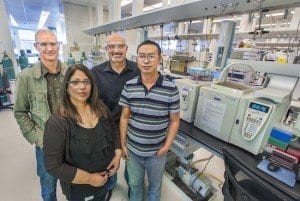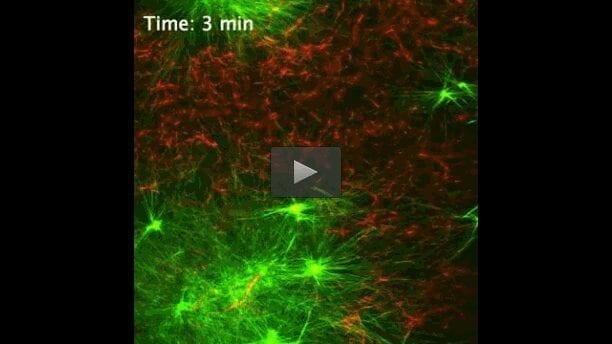
Researchers affiliated with Ulsan National Institute of Science and Technology (UNIST), South Korea, have found a new way to convert human waste into renewable energy sources.
A brand new outdoor laboratory has been recently launched at UNIST and this is expected to convert human waste into renewable energy sources, and possible to a monetary value.
Nestled in the center of UNIST campus, this hexagonal-shaped laboratory, called Science Walden Pavillion is now open to the public.
The pavillion, designed by Artist Seung-hyun Ko, Co-Founder of the Korean Nature Art Association (YATOO), consists of two floors with a total area of 122.25 square meter, featuring walls of translucent polycarbonate to allow visual connection between the inside and outside of the pavillion.
Prof. Jaeweon Cho (School of Urban and Environmental Engineering, UNIST), Director of Science Walden Pavillion who is heading the project, states “Science Walden Pavillion not only stands for a playground for both scientists and artist, but also the medium that connects arts and science.” He adds, “The pavillion is a unique blending of creative studio and research lab, bringing arts and science together.”
The major research facilities of this pavillion include “Waterless Energy-producing Toilet System” and “Microbial Energy Production System”.
The waterless toilet system, located on the first floor of the pavillion treats human excrement without using water. The system utilizes a natural biological process to break down human waste into a dehydrated odorless compost-like material. Then, at the microbial energy production system, this compost-like material is converted into biodiesel or heat energy.
Once the grinding system inside the toilet converts feces into a dry, odorless material, it will be transferred to a digestion tank, containing thousands of different microbes. The microbes inside the tank will, then, biodegrade the powdered human manure to generate carbon dioxide and methane. Using high pressure and membrane, carbon dioxide is extracted to culture green algae for biofuel while methane is stored for later use as a heating fuel.
The project aims to reduce urbanization’s negative footprint on ecosystems by safely converting human waste into viable renewable energy and possibly to a monetary values.
Prof. Cho states, “Our ultimate goal is not only for the new toilet system to save water and operational costs for wastewater treatment plants, but for us to establish an ecosystem that supports technology innovation and drives economic diversification where human waste literally has a financial value.”
To reduce the objection of using the facility, Prof. Cho and his project team added a unique artistic touch to this collaborative outdoor laboratory. They have designed a futuristic toilet with groundbreaking innovations in sanitation technology that is comfortable at the same time. A roof garden, which filters rainwater and provides insulation is another added value to this pavillion.
Besides, Prof. Cho has developed a smartphone application that can determine the monetary value of the treated human excrement. Using this application, people can soon trade their waste for a virtual or digital currency to use. At the pavillion, the team plans to expand into selling salads made with barley sprouts, which can be only purchased with such virtual currency.
“This is a very exciting project for us,” says Prof. Cho. “We expect that this will become a pivotal stepping stone in the developing future of many countries facing dangerous sanitation issues and a lack of reliable, affordable energy”.
If this experiment succeeds, the team plans to expand its use of the waterless toilet system and microbial energy production system in real life. This project has been carried out in collaboration with YATOO, Art Center Nabi, Paju Typography Institute (PaTI), and Hankuk Engineering Consultants (H.E.C.) in South Korea.
Located near the plaza in front of UNIST Business Administration Building, the Science Walden Pavillion is free and open to the public daily from 9 am to 6 pm. The pavillion also operates Docent Programs, available on selected hours.
Learn more: Turning Human Waste into Next Generation Biofuel
The Latest on: Convert human waste into renewable energy
[google_news title=”” keyword=”convert human waste into renewable energy” num_posts=”10″ blurb_length=”0″ show_thumb=”left”]
via Google News
The Latest on: Convert human waste into renewable energy
- Bioenergy Devco Named 2024 Seal Business Sustainability Awards Winneron May 9, 2024 at 6:23 am
Bioenergy Devco, a global leader in the design, engineering, construction, financing, and operation of advanced anaerobic digester systems, has been named as a winner of the 2024 SEAL Business ...
- UK homes heated by human pooon May 8, 2024 at 6:04 am
Aston University has secured funding to convert sewage sludge into clean water and energy, potentially heating homes with human waste ...
- Energy and the Environment Newson May 1, 2024 at 5:00 pm
Clearing the Air: Wind Farms More Land Efficient Than Previously Thought Apr. 17, 2024 — Wind power is a source of energy that is both affordable and renewable ... metal waste into a highly ...
- New plant in Lexington to convert food waste to renewable energyon April 21, 2024 at 5:00 pm
LEXINGTON — A Massachusetts company that has purchased property in Lexington plans to build a plant that will process food waste into renewable energy. Divert Inc. has purchased 28 acres at 304 U.S.
- $440M food-waste-to-RNG facility breaks ground in Lindenon April 15, 2024 at 5:00 pm
Captona and RNG Energy Solutions, the site will be the nation’s largest food waste-to-renewable natural gas facility. The $440 million project will convert organic waste into bio-methane using ...
- Your turn: Clean energy investments are a win-win-winon April 12, 2024 at 3:01 am
By repurposing that waste into renewable energy, we can simultaneously decrease the burden of overflowing landfills, which are not a long-term, sustainable solution for the waste management needs ...
- Renewable Energy Newson April 7, 2024 at 5:00 pm
Feb. 27, 2024 — Solar energy is one of the most promising, widely adopted renewable energy sources, but the solar cells that convert ... Radioactive waste products can be turned into more ...
- To Save Environment, Couple Converts Human Waste Into Cooking Fuelon February 18, 2024 at 9:16 pm
This innovative apparatus converts the waste into cooking gas ... which can be utilized as an energy source. Biogas is classified as a renewable energy source due to its reliance on organic ...
- Push to Turn Farm Manure into Renewable Energy Draws Concernson December 6, 2023 at 4:00 pm
This report, co-published with The New Lede, is part of an ongoing series on how changing agricultural policies affect human and environmental ... would turn polluting agricultural waste into a source ...
- Renewable Energyon October 2, 2018 at 1:50 pm
A variety of technologies are used to convert these renewable resources into electricity. Each comes with its own unique set of benefits and challenges; collectively, they represent our best hope in ...
via Bing News










